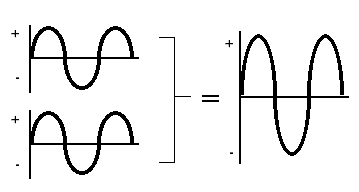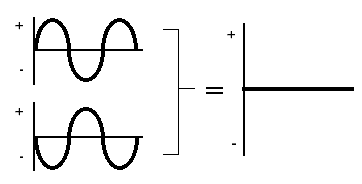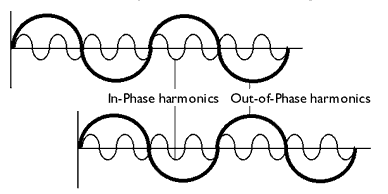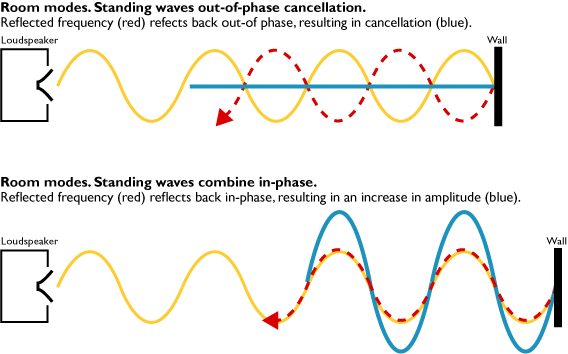- How individual harmonics in a complex soundwave combine to create the overall wave
- How reflected complex soundwaves behaves in an acoustical space, such as a room.
- The correct setting up of a monitoring system.
- The correct setting up of microphones in a multi-mic setup.
- Mixing audio signal in a mixing desk.
- Phasing effects.
- Flanging effects.
Phase relationship effects can occur between soundwaves in the air, electrical pressure soundwaves in an analogue sound system, and digital signals in a digital sound system.
Now either read on below, or watch our sister site's (www.projectstudiohandbook.com) video on Phase & Harmonics here ..
What is a harmonic?
So far we have only looked at the simplest vibration, a sine wave. But almost all sounds are far more complex, especially those produced in nature. Complex soundwaves are formed from multiple individual vibrations, or sine waves, arriving at different times and of different frequencies.
Each individual vibration in a complex wave is known as a harmonic.
Phase in complex soundwaves, refers to the relationship between these harmonic vibrations, and it is essential for an understanding of how harmonics combine to create a single overall complex wave.
In phase
Two identical sound waves of the same frequency are said to be In-Phase when their compression and rarefaction cycles coincide exactly in time and space. If two waves of the same frequency sum together in-phase the resulting wave will be of the same frequency but have the combined amplitude of both wave.

Out of phase
Two sound waves of the same frequency are said to be Out-of Phase when their compression and rarefaction cycles diverge. In this case they will cancel each other out.

These 2 situations represent the extremes of phase shift. Between these extremes it is possible to have situations where the two soundwaves are partially in and out of phase.
Phase differences can be the result of time delays between two identical soundwaves. Two soundwaves radiating from two sources (say a stereo speaker system), which are positioned equidistant from the listener, will arrive at their ears in-phase. If one speaker is placed further or nearer than the other then the signals will be out of phase to some degree dependent on the distance and the frequencies.
Phase effects between complex sounds
It is important to remember that most sounds contain harmonics at many different frequencies. The effect of combining 2 or more complex waves is to create an even more complex pattern of summing and canceling which can sound very dynamic if variations in the delay time between them are introduced, as in Phasing, Flanging, and Chorus effects.

Standing waves
Standing waves (also known as room modes) occur when a reflected sound wave combines or diverges with a direct sound waves. Points of high and low amplitude occur as they sum together or cancel each other out. This happens when one or more of the dimensions of a room (length, width, height) is a direct multiple of the wavelength of the sound. Read more about acoustics here.

Polarity
Because they relate to each other, many sound recordists confuse phase and polarity. They say phase when they mean polarity and vice versa. In sound recording, polarity usually refers to audio electrical connections in an sound system.
For example, if you reverse the polarity (connect positive to negative and negative to positive) of a single speaker system (mono), the sound will not change because there is only a single soundwave and therefore no phase relationship.
However if you change/reverse the polarity of only one speaker connection in a stereo system, you will create a change in the phase relationship between the two speakers. This will be most noticeable with a mono sound that has been panned close to the centre of the stereo field. It will probably sound much quieter.
Full article on Polarity & Phase
